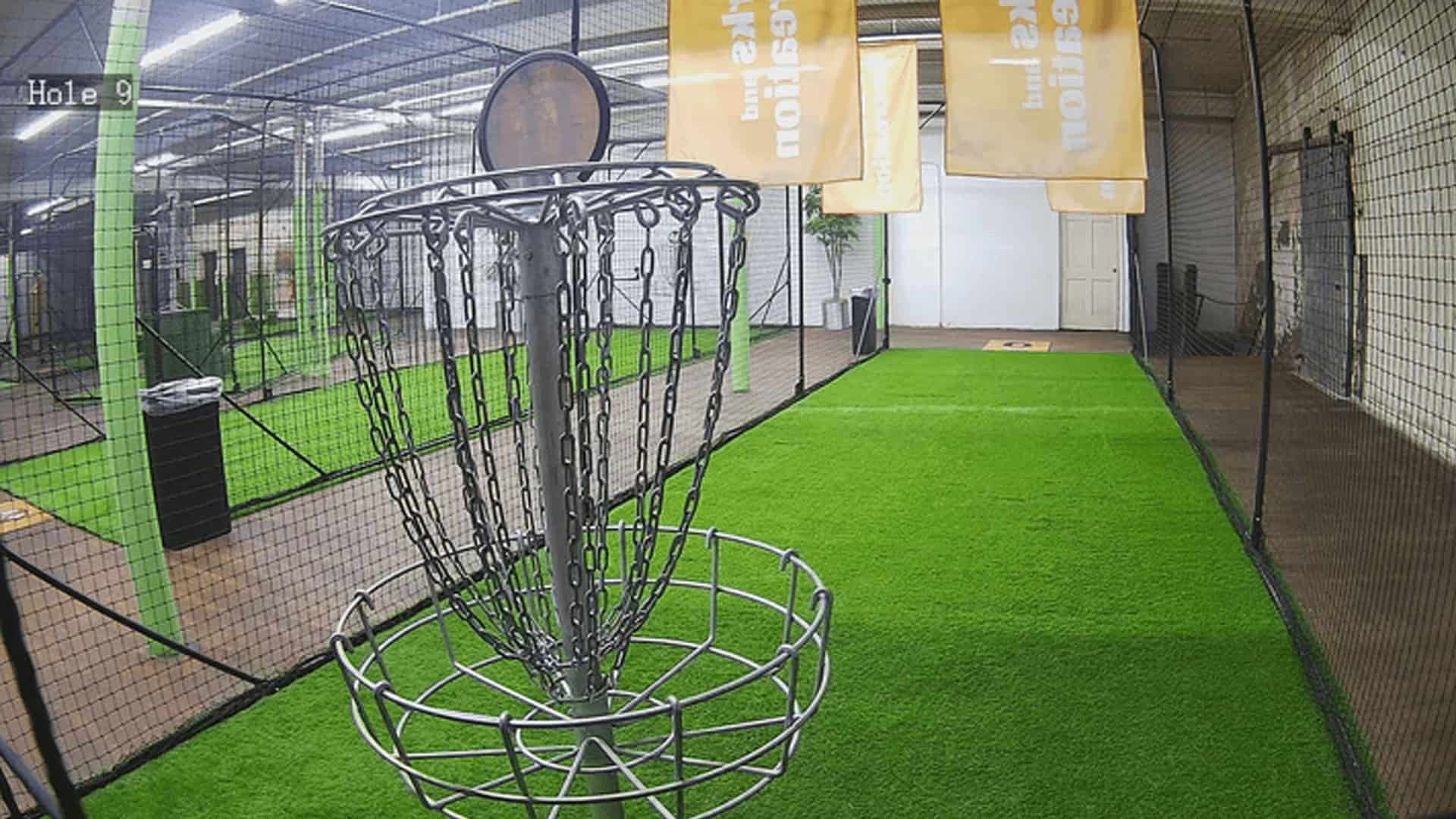Disc golf has a scoring system similar to that of traditional golf. However, if you are playing disc golf for the first time and are unfamiliar with how such a system works, then keeping score can give one the heebie-jeebies if not done properly.
In a standard disc golf course, you need to complete either 9 or 18 holes. The scoring system will be based on the amount of throws it takes to rest your disc inside each target basket. Each throw is also commonly called a ‘stroke.’
Disc Golf Scoring Explained
As each player completes their throw for the hole (by reaching the target basket), then, the amount of strokes required for each hole is recorded. You combine all the stroke numbers at the end of a round to get your final score.
The winner of the game is the player who manages to complete all the holes with the least amount of strokes in the group.
There is a misconception among new players that the goal of playing disc golf is simply to land the disc on the target. That’s only half the story; if one wants to win the game, one must also do it with as few strokes as possible.
Remember this rule, less is best in disc golf.
Compared with other sports like tennis or badminton, the scoring system in disc golf is relatively easy to keep track of. The catch is that in casual play, you do not have any referee to keep tabs on you, so you must do it yourself.
Disc Golf Scorecard
Here is an example of a disc golf scorecard:

In a typical scorecard, starting from the top row as shown above, you will find common disc golf terms such as hole, par, and distance.
- Hole is for the hole number on the course.
- Distance is the length from the front of the tee area to the target hole.
- Par is the amount of strokes expected to complete the hole.
At the far right, there’s a column for the total number of pars, distance, and each player’s score. Players can fill in their names and scores on the respective blank rows and columns provided.
Should you need one, we’ve also created a printable disc golf scorecard that you can use for your next game.
Disc Golf Scoring Terms
Par, mentioned above, comes from an old stock exchange term from the 17th century, which signifies that a stock value may be above or below its standard figure. It has been widely used in the golfing world, and because disc golf scoring is similar to golf, many scoring terms from golf are also used in disc golf, such as birdie, eagle, etc.
If you want to get into the vernacular of disc golf players when you’re out on the greens, then here are a few disc golf terms that we think you should add to your vocabulary:
- Birdie: meaning a score of one stroke less than the hole’s par.
- Eagle: meaning a score of two strokes less than the hole’s par.
- Albatross: meaning a score of three strokes less than the hole’s par.
- Ace: when you complete your hole in one throw from the tee pad.
Disc Golf Scoring Penalty
A penalty throw will be given if a player breaks the rules during a play (for regulated play, the official rules from PDGA will be in effect). For example, when your disc falls in an out-of-bound area, or your disc lands somewhere out of sight & can’t be found and is declared lost, you will receive one penalty throw.
Here are a few examples of disc golf terms related to a penalty.
- Hazard: an illegal landing zone that incurs one penalty stroke. You may not start your throw from a different lie and must make your next throw from the same lie position.
- Out-of-Bounds (OB): an area designated by the game Director where no play is allowed. It may or may not include a hazard area. If a disc lands out-of-bounds, the player will receive a penalty of one throw and make the next throw within the closest in-bounds area, not where the disc previously landed.
Depending on the severity of the violation, a penalty throw or two may be added to your strokes. Since you don’t want to incur penalties, be careful where you throw your discs.
How to Improve Your Disc Golf Score
In disc golf, improving your score means lowering it. Because the fewer strokes you make, the better your chances of winning the game.
Here are a few applicable tips that you can use to score better overall points.
More Practice
You know it, we know it, everyone knows it. There is only one shortcut to getting better at disc golf: more practice. The more you practice and familiarize yourself with various aspects of the game, the better you will get at it.
And, the better you play, the easier it is to land the disc into the basket with fewer strokes below par.
Increase Putt Accuracy
Putting is one of disc golf practice’s most important yet often neglected moves. In theory, putting sounds really easy: all you have to do is throw your disc within ten meters of the target.
The problem here is accuracy. While most players train for more power to cover more flight distance, such training is less beneficial when your aim is to improve your accuracy.
Try to include a specific accuracy training regimen into your practice routine and measure your accuracy progress regularly.
Choose Your Disc
A player should not focus solely on choosing the right disc but choose the right one for you.
What does the right disc mean? It’s a disc most suitable for your skill level and gameplay.
If you are new to disc golf and just starting, give less priority to using drivers. The skill and power requirement to throw drivers to their optimum distance has yet to be adequately set.
Instead, stick with beginner-friendly putts and mid-ranges. They will serve you better and reduce the strokes you need to make to complete a hole.
Ready to Score?
Okay, now that you know how disc golf scoring works, it’s time to implement that knowledge. Go out and get yourself an ace!


